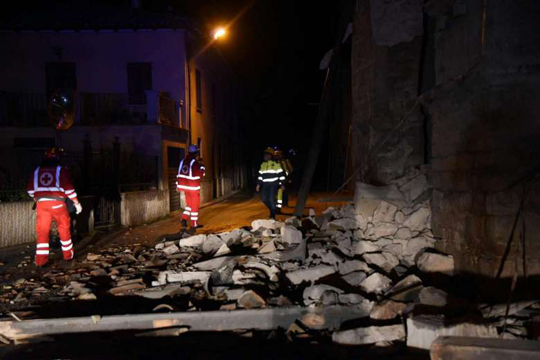Rome, Oct 27: Two strong earthquakes rocked a wide area of central Italy on Wednesday, striking fear among residents rattled by a deadly tremor in August, but there were no reports of casualties.

The quakes, which struck about two hours apart, caused the collapse of several old structures, including a number of historic rural churches that were empty at the time.
The second quake was measured at 6.0 magnitude by the U.S. Geological Survey and the first measured 5.4.
More than three hours after the first quake, Civil Protection department chief Fabrizio Curcio said only one person was slightly injured.
All indications were that the damage would not approach that caused by the major quake that struck the Marche, Lazio and Umbria regions on Aug. 24, which devastated several towns and killed nearly 300 people.
Amateur video footage on television showed clouds of dust rising as parts of buildings collapsed in some towns, including Camerino in the Marche region, where a bell tower fell on a building.
Massive boulders, some the size of cars, fell on the main north-south road of the Nera River valley that links mountain communities.
Both tremors sent residents running into the streets into the rain and were strong enough to be felt as far south as the outskirts of Naples more than 250 km (150 miles) away. Masonry fell from some buildings in Rome.
The epicentres of both quakes were near the town of Castelsantangelo sul Nera in the Marche region.
The historic late 15th-century rural church of San Salvatore in Campo, near Norcia in the Umbria region, which had been weakened by the August quake, collapsed.
Electrical power was lost in some of the areas and some roads were closed.
Mauro Falucci, mayor of Castelsantangelo sul Nera, said there was no electricity and people in the town of about 300 residents had gathered in a square.
Italian Prime Minister Matteo Renzi cancelled engagements to follow developments.
Wednesday's earthquakes caused more damage to already precarious structures in Amatrice, the town worst hit by the 6.2-magnitude tremor in August, officials said, but there were no injuries.





Comments
Add new comment